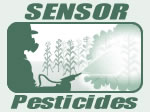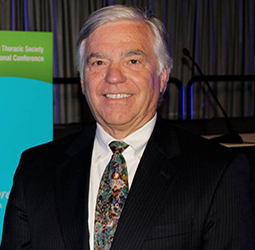
Environmental health is the branch of public health concerned with all aspects of the natural and built environment affecting human health. In order to effectively control factors that may affect health, the requirements that must be met in order to create a healthy environment must be determined. The major sub-disciplines of environmental health are environmental science, toxicology, environmental epidemiology, and environmental and occupational medicine.
The National Academy of Medicine (NAM), known as the Institute of Medicine (IoM) until 2015, is an American nonprofit, non-governmental organization. The National Academy of Medicine is a part of the National Academies of Sciences, Engineering, and Medicine, along with the National Academy of Sciences (NAS), National Academy of Engineering (NAE), and the National Research Council (NRC).

The Toxic Substances Control Act (TSCA) is a United States law, passed by the 94th United States Congress in 1976 and administered by the United States Environmental Protection Agency (EPA), that regulates chemicals not regulated by other U.S. federal statutes, including chemicals already in commerce and the introduction of new chemicals. When the TSCA was put into place, all existing chemicals were considered to be safe for use and subsequently grandfathered in. Its three main objectives are to assess and regulate new commercial chemicals before they enter the market, to regulate chemicals already existing in 1976 that posed an "unreasonable risk of injury to health or the environment", as for example PCBs, lead, mercury and radon, and to regulate these chemicals' distribution and use.

Herbert Leroy Needleman researched the neurodevelopmental damage caused by lead poisoning. He was a pediatrician, child psychiatrist, researcher and professor at the University of Pittsburgh, an elected member of the Institute of Medicine, and the founder of the Alliance to End Childhood Lead Poisoning. Dr. Needleman played a key role in securing some of the most significant environmental health protections achieved during the 20th century, which resulted in a fivefold reduction in the prevalence of lead poisoning among children in the United States by the early 1990s. Despite engendering strong resistance from lead-related industries, which made him the target of frequent attacks, Needleman persisted in campaigning to educate stakeholders, including parents and government panels, about the dangers of lead poisoning. Needleman has been credited with having played a key role in triggering environmental safety measures that have reduced average blood lead levels by an estimated 78 percent between 1976 and 1991. He died in Pittsburgh in 2017.

Dichlorvos is an organophosphate widely used as an insecticide to control household pests, in public health, and protecting stored products from insects. The compound has been commercially available since 1961 and has become controversial because of its prevalence in urban waterways and the fact that its toxicity extends well beyond insects. Since 1988, dichlorvos cannot be used as a plant protection product in the EU.

Irving J. Selikoff was a medical researcher who in the 1960s established a link between the inhalation of asbestos particles and lung-related ailments. His work is largely responsible for the regulation of asbestos today. He also co-discovered a treatment for tuberculosis.

Steven Kenneth Galson is an American public health physician. He is currently a Senior Advisor at the Boston Consulting Group and Independent Board Member at Biocryst Pharmaceuticals and Elephas Biosciences. Until 2021 he was Senior Vice President for Research and Development at Amgen, the California-based biopharmaceutical company. He is also a Trustee and Professor-at-Large at the Keck Graduate Institute for Applied Life Sciences in Claremont, California. He is a retired rear admiral in the United States Public Health Service Commissioned Corps and public health administrator who served as the acting Surgeon General of the United States from October 1, 2007 – October 1, 2009. He served concurrently as acting Assistant Secretary for Health from January 22, 2009 to June 25, 2009, and as the Deputy Director and Director of the Center for Drug Evaluation and Research (CDER) at the Food and Drug Administration from 2001 to 2007. As the Acting Surgeon General, he was the commander of the United States Public Health Service Commissioned Corps and, while serving as the Assistant Secretary for Health, was the operational head of the Public Health Service.

Sentinel Event Notification System for Occupational Risks (SENSOR)-Pesticides is a U.S. state-based surveillance program that monitors pesticide-related illness and injury. It is administered by the National Institute for Occupational Safety and Health (NIOSH), twelve state health agencies participate. NIOSH provides technical support to all participating states. It also provides funding to some states, in conjunction with the US Environmental Protection Agency.
The Institute of Occupational Medicine (IOM) was founded in 1969 by the National Coal Board (NCB) as an independent charity in Edinburgh, UK and retains its charitable purpose and status today. The "Institute" has a subsidiary, IOM Consulting Limited, which became fully independent in 1990 and now celebrates its 25th year within the IOM Group as an independent consultancy and also the commercial part of the IOM organization. It specializes in asbestos surveys and services, occupational hygiene services, nanotechnology safety, laboratory analysis and expert witness consulting services. IOM is therefore one of the UK's major independent "not for profit" centres of scientific excellence in the fields of environmental health, occupational hygiene and occupational safety. Its mission is to benefit those at work and in the community by providing quality research, consultancy, surveys, analysis and training and by maintaining an independent, impartial position as an international centre of excellence.
Paul James Lioy was a United States environmental health scientist born in Passaic, New Jersey, working in the field of exposure science. He was one of the world's leading experts in personal exposure to toxins. He published in the areas of air pollution, airborne and deposited particles, Homeland Security, and Hazardous Wastes. Lioy was a professor and division director at the Department of Environmental and Occupational Health, Rutgers University - School of Public Health. Until 30 June 2015 he was a professor and vice chair of the Department of Environmental and Occupational Medicine, Rutgers University - Robert Wood Johnson Medical School. He was deputy director of government relations and director of exposure science at the Rutgers Environmental and Occupational Health Sciences Institute in Piscataway, New Jersey.
The Collegium Ramazzini is an independent, international academy composed of physicians, scientists, and scholars from 35 countries. Through its members and activities, it seeks to advance occupational and environmental health by bridging scientific knowledge with socio-political centers that have the responsibility to protect public health. The organization is named after physician Bernardino Ramazzini (1633–1714), known as “the father of occupational medicine.”
Stephen M. Levin was the medical director of the Mount Sinai Irving J. Selikoff Center for Occupational and Environmental Medicine, a professor of occupational medicine at the Mount Sinai School of Medicine, and the co-director of the World Trade Center Worker and Volunteer Medical Screening Program. A graduate of Wesleyan University and then New York University School of Medicine, Levin was born and raised in Philadelphia to working-class parents—his father was a carpenter, his mother a hospital worker. He was recognized worldwide as a leader in the field of occupational medicine, particularly due to his work on behalf of 9/11 workers and those injured by asbestos in the town of Libby, Montana.
Philippe Grandjean is a Danish scientist working in environmental medicine. He is the head of the Environmental Medicine Research Unit at the University of Southern Denmark and adjunct professor of environmental health at the Harvard School of Public Health. Grandjean is also co-founder and co-editor-in-chief of the journal Environmental Health, and consultant for the National Board of Health in Denmark. He is known for his research into the developmental toxicity and adverse effects of certain environmental chemicals to which children are commonly exposed.
Luz Claudio is an American medical researcher. She is best known for her research on asthma in low income communities. Dr. Luz Claudio balances a research focus on preventive medicine with leadership in community outreach, education, and training of students and postdoctoral fellows for successful careers in research.
Sibte Hasan Zaidi was an Indian pathologist and toxicologist. After his training in pathology at the Hammersmith Hospital in London, United Kingdom, he returned to India to continue experimental toxicology research. During his later years, he served on national and international committees, such as the World Health Organization, to advise on the harmful biological effects of industrial toxins.

United States of America v. Reserve Mining Company, 408 F. Supp. 1212, was a United States District Court for the District of Minnesota case that determined the Reserve Mining Company was responsible for amphibole asbestos fibers found in the public drinking water of Duluth, Minnesota and other North Shore (Minnesota) communities.
The New York and New Jersey Education and Research Center is one of eighteen Education and Research Centers funded by the National Institute for Occupational Safety and Health (NIOSH). The NYNJERC was established in 1978.

The Mount Sinai Selikoff Centers for Occupational Health are a set of occupational and environmental health clinics that focus on the prevention, diagnosis, and treatment of workplace injuries and illnesses. Significant injuries and illnesses that are treated at the clinical centers include occupational lung cancers, manganese/silica/lead exposures, and asbestos-related illness, which was the career-long research of Dr. Irving Selikoff, the centers' inaugural director. The Selikoff Centers for Occupational Health's multidisciplinary health care team includes physicians, nurse practitioners, industrial hygienists, ergonomists, social workers, and benefits specialists, who are "leaders in the prevention, diagnosis and treatment of workplace injuries and illnesses," and provide comprehensive patient-centered services in New York City and Lower Hudson Valley. The clinical centers are located within the Icahn School of Medicine at Mount Sinai under the Division of Occupational and Environmental Medicine.
Edwin C. "Ned" Holstein is an American physician and children's rights advocate. He is a founder and chairman of the National Parents Organization, and an advocate for shared parenting as being in the best interest of most children after separation or divorce.

William N. Rom is the Sol and Judith Bergstein Professor of Medicine and Environmental Medicine, Emeritus at New York University School of Medicine and former Director of the Division of Pulmonary, Critical Care and Sleep Medicine at New York University and Chief of the Chest Service at Bellevue Hospital Center, 1989–2014. He is Research Scientist at the School of Global Public Health at New York University and Adjunct Professor at the NYU Robert F. Wagner Graduate School of Public Service. He teaches Climate Change and Global Public Health and Environmental Health in a Global World.










